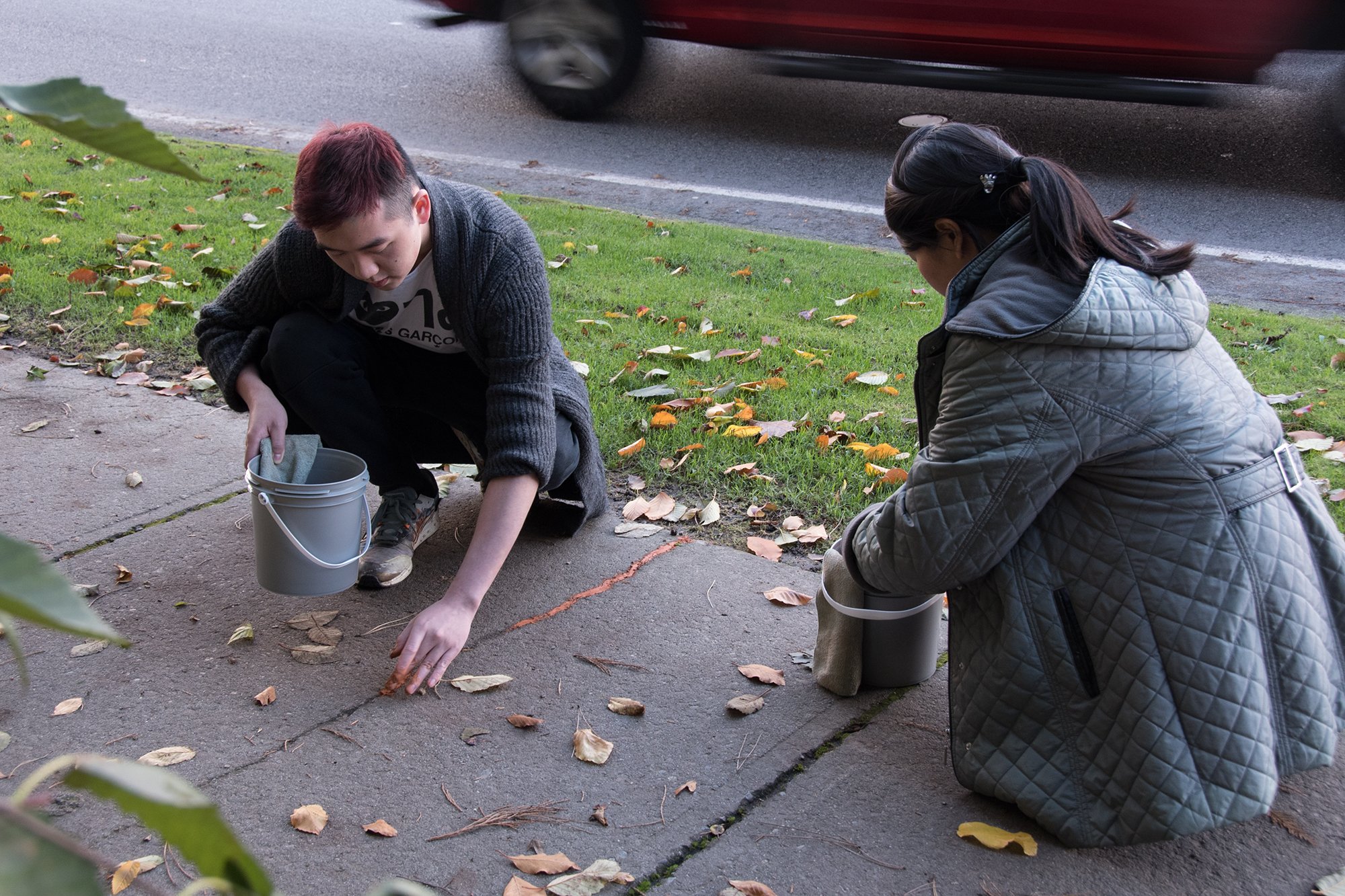
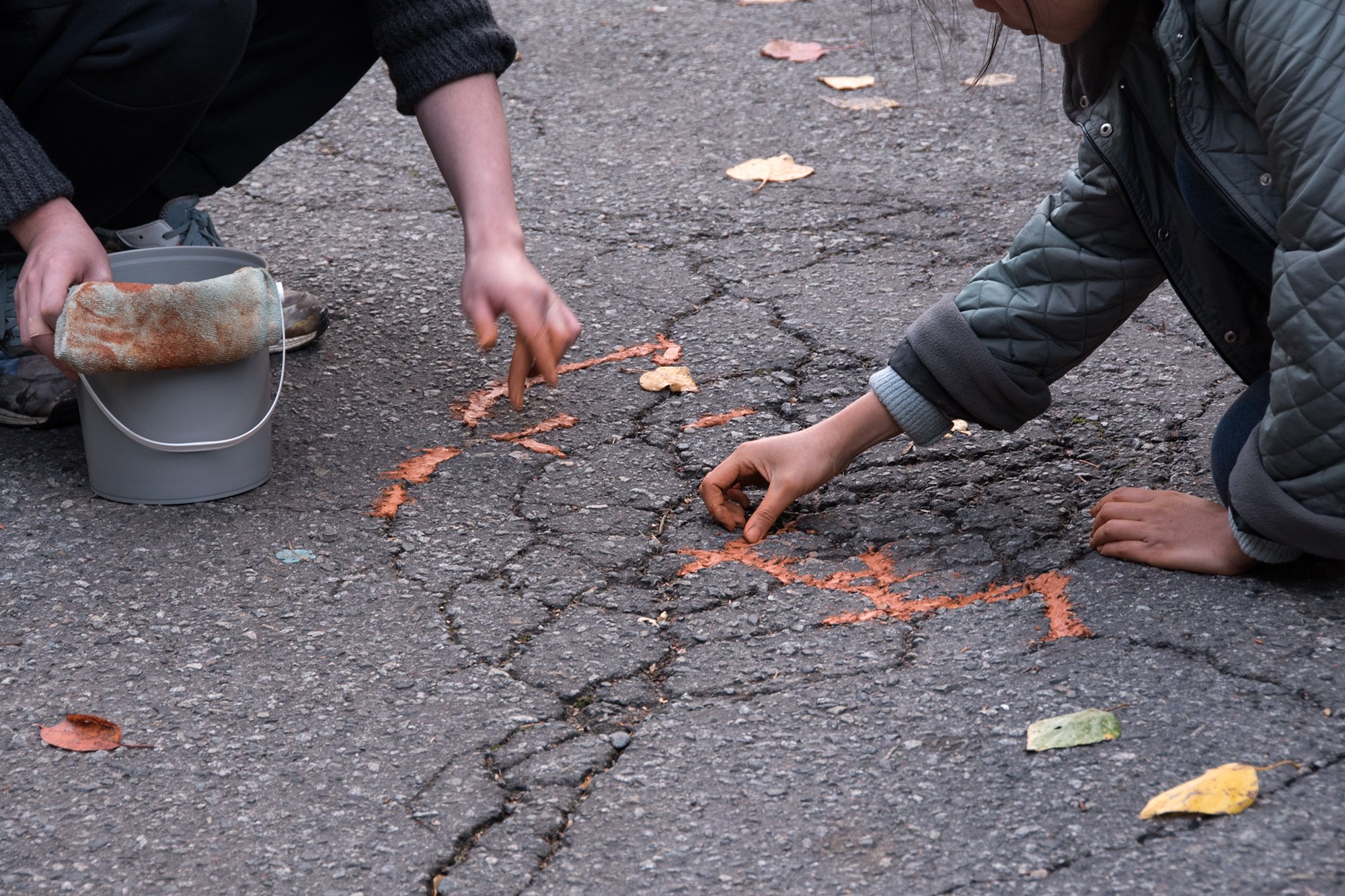
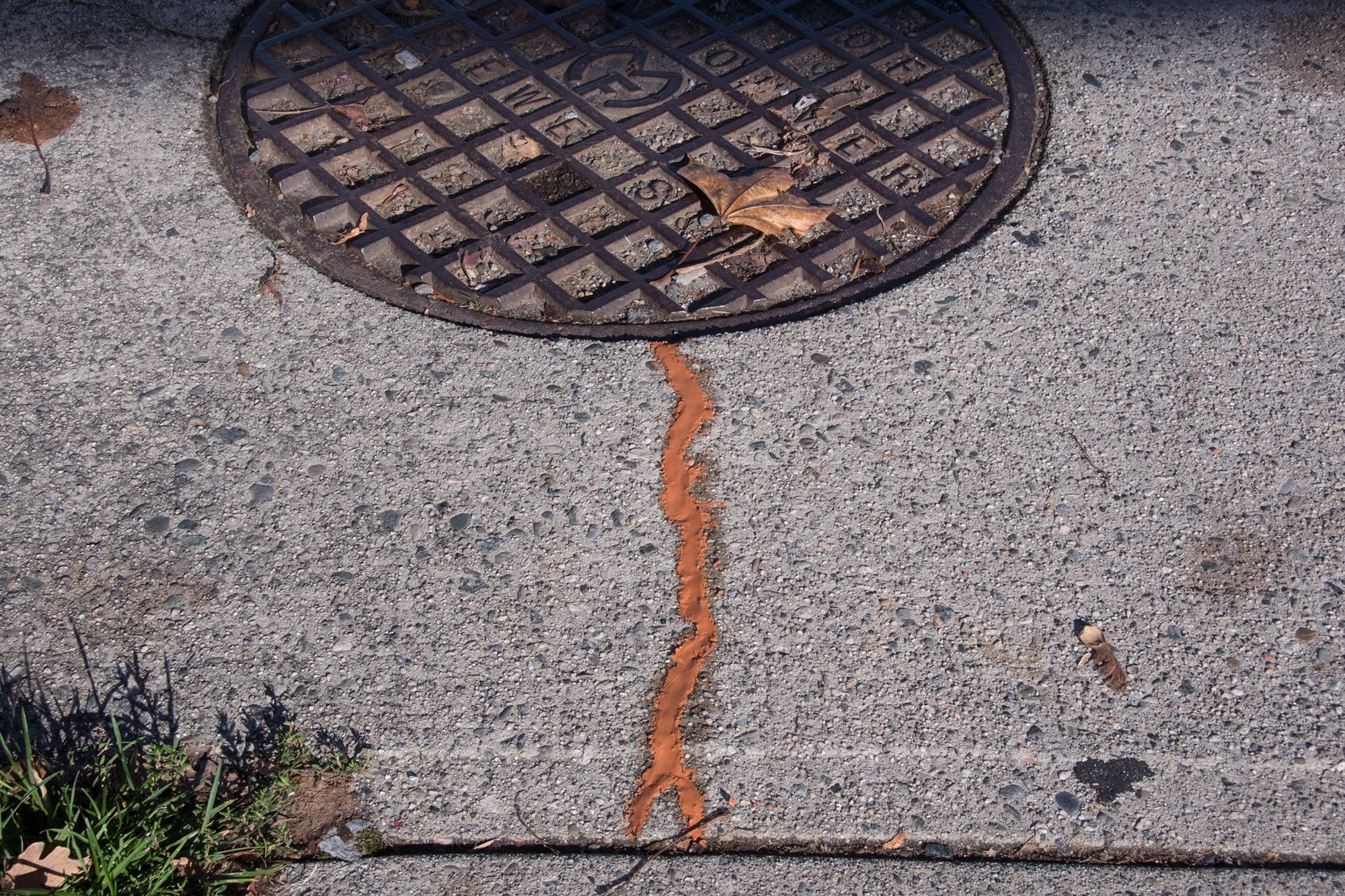
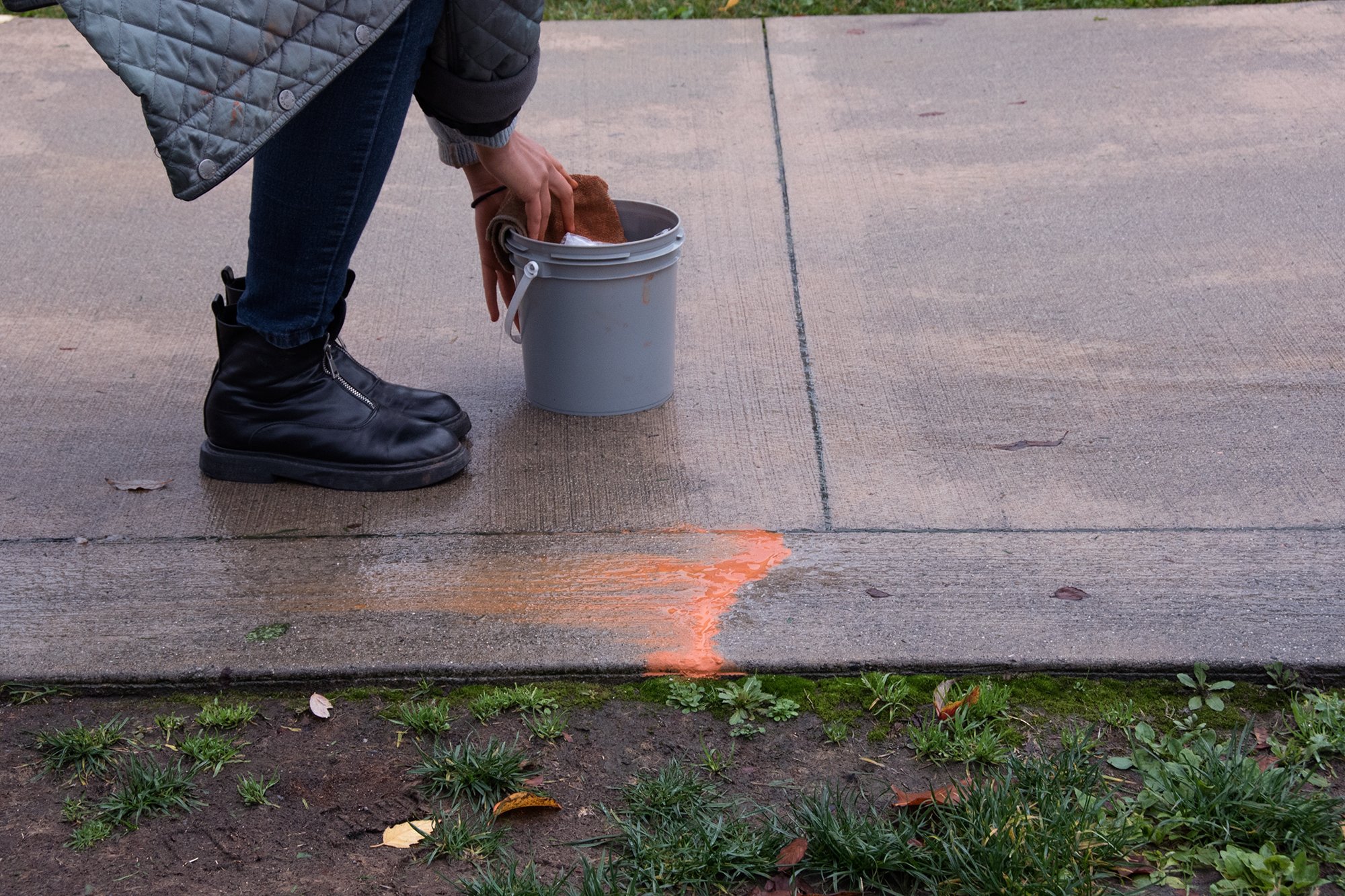
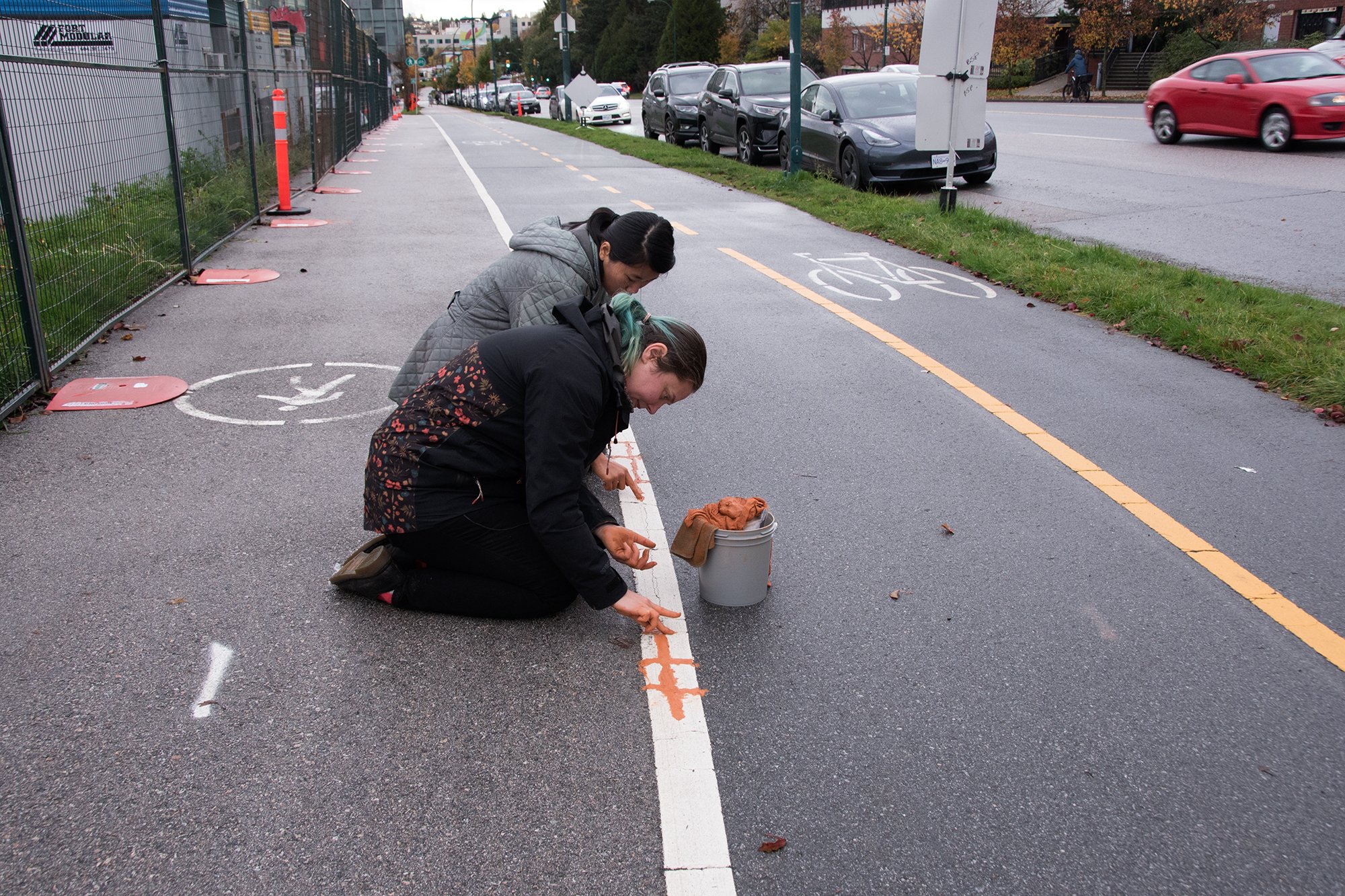
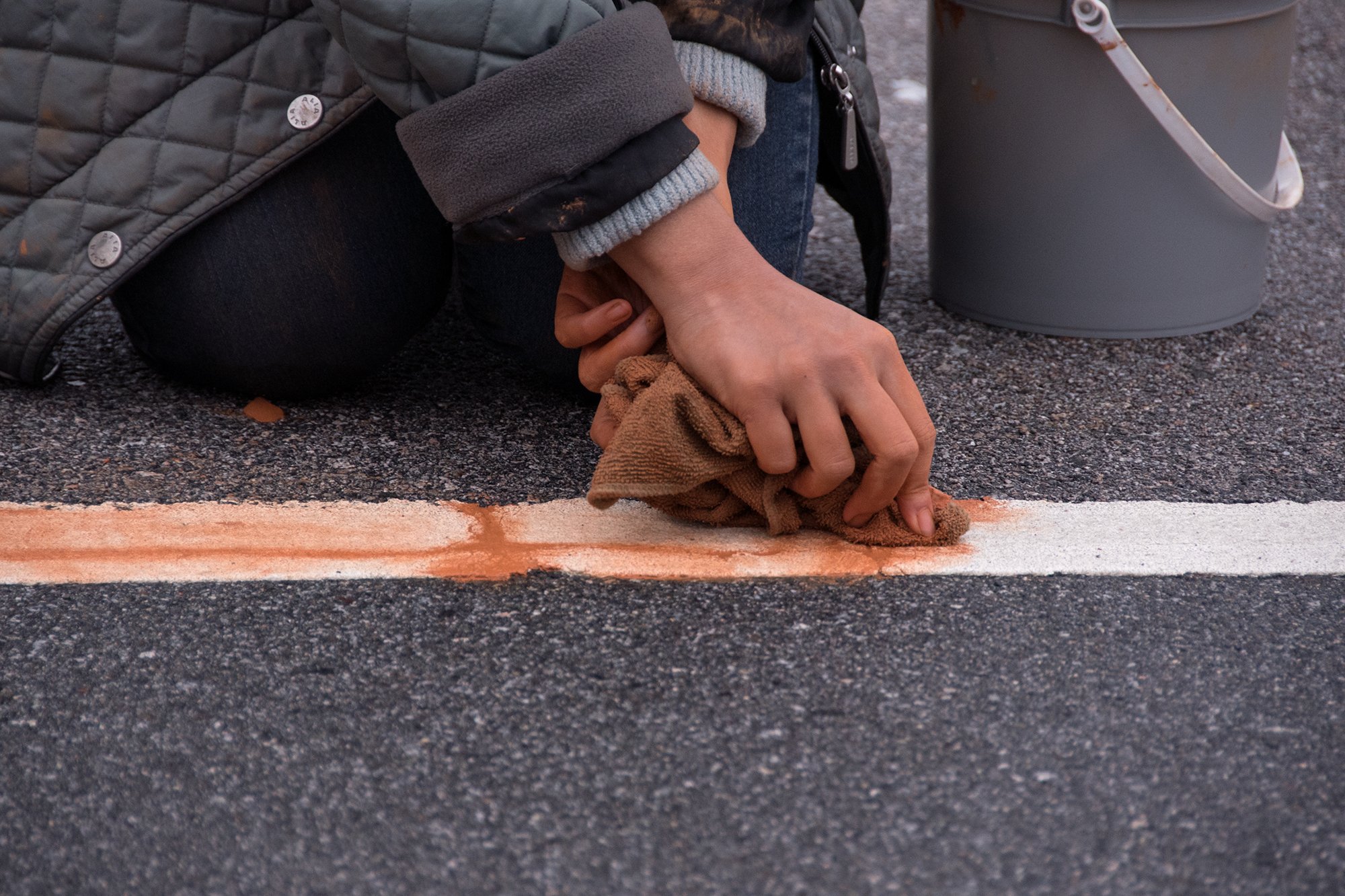
Mend Walks
Hour-long walks starting from the Emily Carr University campus, participatory performance
[Photos by Laura Herridge]
Vancouver sits close to the Cascadia subduction zone – a long crack in the earth’s crust stretching from California to North Vancouver that is continually converging into itself, building up pressure over the past three centuries. Locals sometimes joke that ‘the big one is coming’ with a mixture of cavalier humor and anxiety, but mostly this knowledge is forgotten in the frantic day to day pacing of capitalist time.
I did not know about this crack until I was doing research for Field School, a place-based learning program led by Laura Kozak and Jean Chisholm at ECU. Fascinated by patterns of cracking in my material observations of clay, I found it apt that the earth beneath our feet, which consists of large amounts of clay mineral, is also slowly fissuring unnoticed by us.
In ceramics, the time of making yields to the time of earth, which remains clay’s nature even after it has been packed neatly into 50lb bags. Almost every step of the process – from wedging out air pockets, to covering a clay form to slow its dry time - is carefully considered to avoid the appearance of cracks. But working cyclically with unfired clay, I embrace the cracking. I study their patterns and watch for the moment when they first appear.
In Mend Walks, I invited my peers to take silent, hour-long walks with me around ECU to mend cracks in the sidewalks with unfired clay. But in autumn, rainfalls come frequently in Vancouver. At times, rain hangs like mist, unceasing throughout the day, and the clay begins to wash away even as we are rolling out soft coils with our fingertips and pressing them into cracks. The clay that we use is excavated from the ground beneath the skin of concrete and asphalt in cities. When rain washes away the clay we have laid out, they simply return to geological cycles that they came from.
